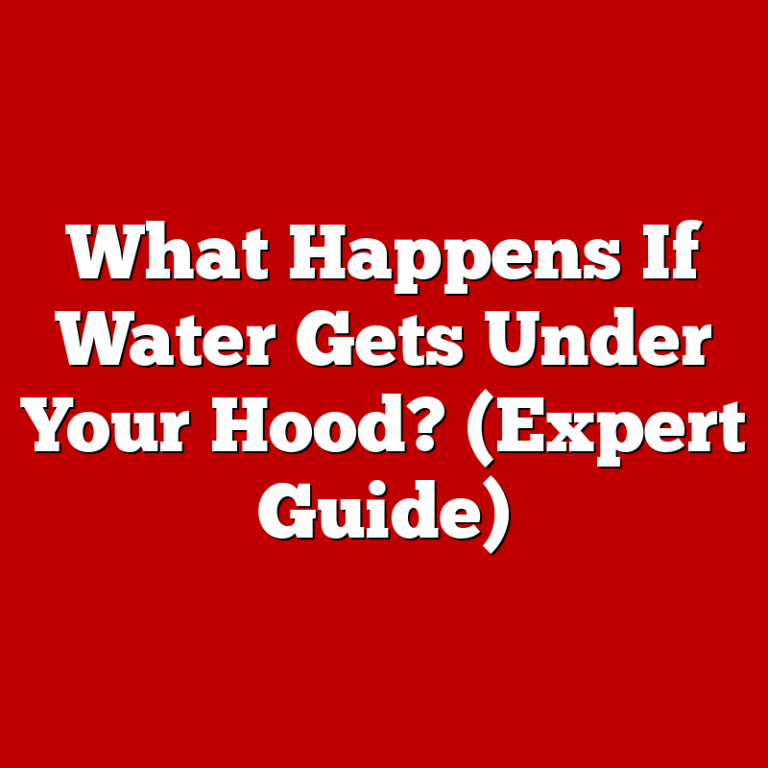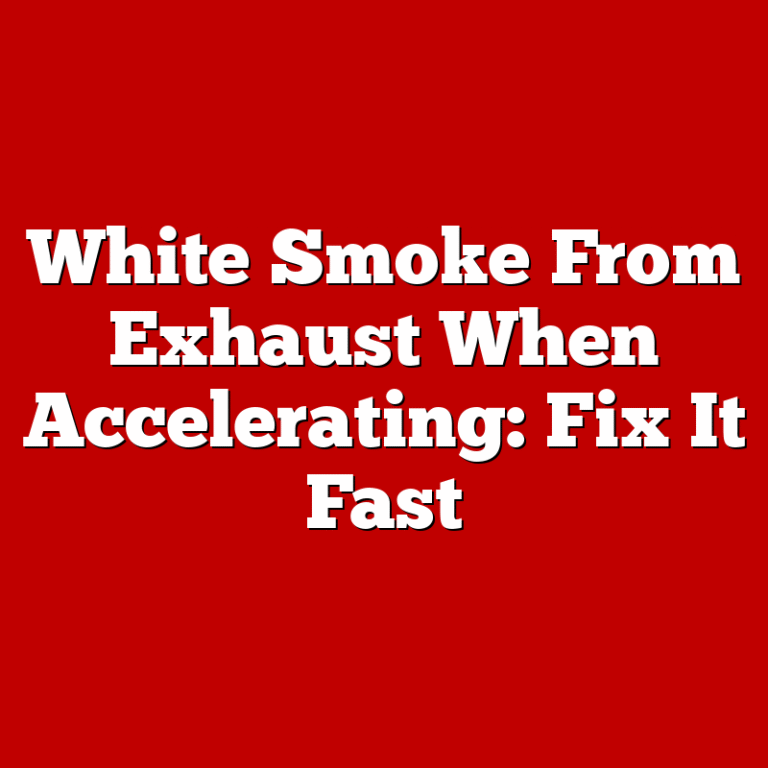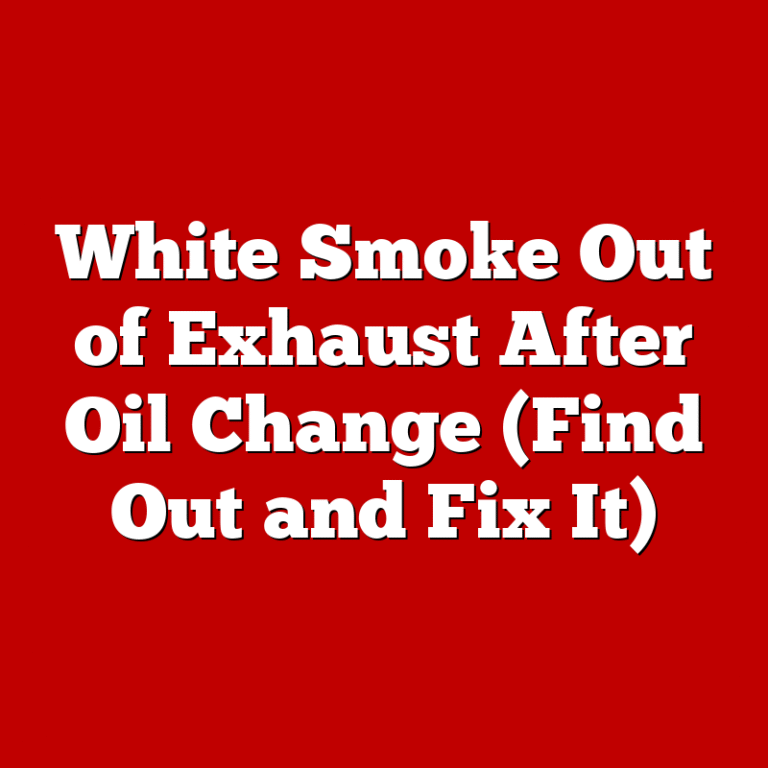As an Amazon Associate, I earn from qualifying purchases at no extra cost to you.
How to Tell if Your Wheel Bearing is Bad: Expert Guide and Tips
When your car starts making strange noises or feels off while driving, one potential culprit could be a bad wheel bearing. It's a part that's crucial to your car's performance and safety, but it's easy to overlook—until something goes wrong. Knowing the signs of a bad wheel bearing can help you catch the problem early and prevent costly repairs. In this article, I'll walk you through the common symptoms, causes, and solutions for a failing wheel bearing.
Understanding Wheel Bearings and Their Role in Your Vehicle
Before diving into how to tell if your wheel bearing is bad, it helps to understand what this important component does. A wheel bearing is a set of steel balls or rollers housed in a metal ring, which sits inside the wheel hub.
Its job is to allow the wheel to spin smoothly while supporting the weight of the vehicle. Simply put, without functioning wheel bearings, your wheels wouldn’t rotate properly, which would make driving a whole lot harder and more dangerous.
Now that you know the basics of a wheel bearing, let's explore how to identify when it's going bad and what you can do about it.
Common Symptoms of a Bad Wheel Bearing
A bad wheel bearing can show itself in various ways. Recognizing the early symptoms can save you from a breakdown and avoid more serious damage to your car. Here are some of the most common signs:
1. Unusual Noises While Driving
One of the first things you might notice when your wheel bearing is going bad is strange noises coming from the wheel area. These noises can vary, but they usually sound like grinding, humming, or a low-pitched growl. The sound tends to get louder as you drive faster and may change depending on the direction you're turning.
If you hear a grinding or growling noise coming from one side of the car, it could be the result of a wheel bearing that's losing its smooth operation. This noise will often be present when the car is in motion, especially when you’re turning. The direction of the noise might even shift depending on which wheel bearing is affected.
2. Vibration in the Steering Wheel
Another sign of a bad wheel bearing is vibration in the steering wheel. This happens because the damaged bearing causes the wheel to move irregularly, which in turn translates to vibrations in the steering column. The vibrations might feel stronger when you're driving at higher speeds, and they may be accompanied by wobbling in the wheel. If you notice the steering wheel shaking even when driving straight, it's a good idea to have your wheel bearings checked out.
3. Uneven Tire Wear
If your wheel bearings are wearing out, the wheels may not rotate properly, causing uneven tire wear. A bad bearing can put extra pressure on one side of the wheel, leading to irregular patterns in the tread of your tires. While tire wear can also be caused by misalignment or unbalanced tires, it's important to check your wheel bearings if you notice any unusual wear on the inner or outer edges of the tire.
4. Car Pulling to One Side
A bad wheel bearing can sometimes cause the car to pull to one side. This happens because the damaged bearing affects the wheel's alignment, making it harder for the car to track straight. If your car seems to drift or pull in one direction, even if you’re not steering, it could be a sign that your wheel bearing is going bad. This issue might be subtle at first but can worsen over time.
5. Play or Movement in the Wheel
When the wheel bearing starts to fail, there may be noticeable play or movement in the wheel. You can check for this by lifting the car and grabbing the wheel at the top and bottom. If there's excessive movement, or if it feels loose when you wiggle it, your wheel bearing may be the cause. This is a serious problem that could lead to further damage if left untreated.
How Wheel Bearings Fail: Causes and Risk Factors
Understanding why wheel bearings fail can help you take better care of your vehicle and avoid unnecessary repairs. While wear and tear over time is the most common cause, several other factors can contribute to premature bearing failure. Let's take a closer look at these causes:
1. Age and Wear
Just like any other part of your vehicle, wheel bearings naturally wear out over time. As your car gets older, the bearings may lose their ability to handle the constant friction and pressure of the spinning wheels. While this is a normal part of a car's lifespan, it's important to replace the bearings before they completely fail to avoid further damage to the wheel hub or other parts of the suspension.
2. Lack of Lubrication
One of the most common reasons for wheel bearing failure is a lack of proper lubrication. Bearings rely on grease to keep them cool and prevent friction. If the grease leaks out or dries up, the metal parts inside the bearing can grind against each other, causing damage. Regular inspections and maintenance of your vehicle can help ensure that the wheel bearings are properly lubricated.
3. Contamination
Wheel bearings are designed to operate in a clean environment, but dirt, moisture, and other contaminants can get into the bearing and cause problems. If water or debris enters the bearing, it can cause the metal parts to corrode or rust, which leads to premature wear and failure. This is especially common in regions that experience a lot of rain, snow, or salt on the roads.
4. Overloading or Improper Installation
Improper installation of wheel bearings, or overloading the vehicle with too much weight, can also cause the bearings to fail prematurely. If the bearings are not installed correctly, they may not be able to handle the stress of driving. Similarly, excessive weight can put undue pressure on the bearings, leading to faster wear. Always ensure your car is loaded within its weight limits and that any repairs are done by a professional.
5. Poor Road Conditions
Driving on rough, uneven roads can also contribute to wheel bearing failure. Potholes, curbs, and other hazards can damage the bearings over time. If you frequently drive on poor road conditions, it may be wise to get your bearings checked more regularly to catch any issues before they become serious.
How to Check Your Wheel Bearings: DIY or Professional Help?
If you suspect that your wheel bearing is bad, you might be wondering if it’s something you can check and fix yourself or if you should leave it to the pros. Here's how you can approach it:
1. DIY Inspection of the Wheel Bearings
While diagnosing a wheel bearing problem isn't always easy, you can perform some basic checks on your own. Here's how:
- Lift the Car: Use a jack to lift the car off the ground. Make sure the vehicle is secure before proceeding.
- Check for Play: Grab the tire at the top and bottom and attempt to move it. If it moves excessively, there may be an issue with the wheel bearing.
- Spin the Wheel: Slowly spin the wheel and listen for any unusual noises like grinding or humming.
- Feel for Vibration: Gently place your hand on the wheel or hub to check for any vibrations while it's spinning.
If you notice any of the symptoms discussed earlier—such as noise, play, or vibrations—it's time to take the car to a mechanic.
2. When to Seek Professional Help
Although it's possible to check for wheel bearing problems yourself, it's usually a good idea to take your car to a professional mechanic if you suspect a bad bearing. They have the tools and expertise to properly diagnose the problem and replace the bearing if necessary. Additionally, if you're not comfortable working on your car or if the symptoms are severe, it's best to leave the job to the experts.
3. Costs of Replacing a Wheel Bearing
Replacing a wheel bearing can be expensive, and the cost can vary depending on your vehicle's make and model. On average, replacing a wheel bearing can cost between $200 and $500 per wheel, including labor. However, the longer you wait to replace a bad bearing, the higher the risk of damaging other parts, which could increase the cost of repairs.
I hope this article has helped you understand the signs of a bad wheel bearing and how to spot the issue early. Whether you’re hearing strange noises, feeling vibrations, or noticing uneven tire wear, it’s important to address a bad wheel bearing as soon as possible to avoid more costly repairs. Regular maintenance and careful driving on rough roads can also extend the lifespan of your wheel bearings and keep your car running smoothly.
Frequently Asked Questions (FAQs)
Is it safe to drive with a bad wheel bearing?
Driving with a bad wheel bearing is dangerous. It can lead to further damage to your car and, in extreme cases, cause the wheel to come off. If you notice any signs of a bad bearing, such as grinding noises, vibrations, or pulling, it's best to have it checked by a professional as soon as possible.
Can I replace a wheel bearing myself?
Replacing a wheel bearing is a complex task that requires special tools and expertise. While it's possible to replace it yourself, it's recommended to have a professional mechanic do the job to ensure it's done correctly. If you attempt it yourself, you'll need to have the right tools, including a press, to remove and install the bearing.
Do I need to replace both wheel bearings at the same time?
It's not necessary to replace both wheel bearings at the same time unless both are showing signs of failure. However, if one bearing fails, the other may be close behind, so it's wise to have both inspected when you replace the first one.
Is it possible for a wheel bearing to fail suddenly?
While wheel bearings usually show signs of wear over time, they can fail suddenly if they experience extreme stress or if they haven't been properly maintained. It’s always a good idea to get your bearings checked during regular maintenance to avoid unexpected failures.
Can a bad wheel bearing cause a car to pull to one side?
Yes, a bad wheel bearing can cause a car to pull to one side. The damaged bearing can affect the wheel's alignment, leading to uneven wear and steering problems. If your car is pulling in one direction, it could be a sign of a bad wheel bearing.
Do I need to replace the entire wheel hub if the bearing is bad?
In some cases, yes. Many modern vehicles have integrated wheel hubs where the bearing is part of the hub assembly. If the bearing is bad, the entire hub may need to be replaced. A mechanic can determine if replacing just the bearing is sufficient or if the hub also needs to be replaced.
Is there a way to prevent wheel bearings from wearing out?
To prevent premature wheel bearing wear, make sure to have your car inspected regularly. Avoid driving over potholes and curbs, and ensure your vehicle is not overloaded. Also, pay attention to tire wear and replace tires as needed to avoid putting excess stress on the bearings.
Can a bad wheel bearing cause excessive tire wear?
Yes, a bad wheel bearing can cause excessive or uneven tire wear. If the bearing is damaged, it can prevent the wheel from spinning properly, causing the tire to wear unevenly. Regular inspections can help detect these issues early before they become more serious.











